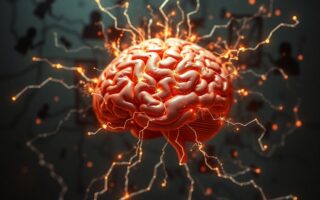What Does an Anxiety Attack Feel Like? Understanding the Experience of Intense Anxiety
Anxiety attacks, also commonly referred to as panic attacks, are intense episodes of overwhelming fear or distress that can manifest both physically and mentally. Understanding what an anxiety attack feels like is crucial for recognizing and managing these challenging experiences effectively.
1. Intense Fear and Dread
At the core of an anxiety attack is an overwhelming sense of fear and dread that can strike suddenly and without warning. This fear often feels irrational or disproportionate to the situation at hand, making it difficult for individuals experiencing an anxiety attack to rationalize or calm themselves down.
2. Physical Symptoms
Anxiety attacks can trigger a range of physical sensations that mimic those of a heart attack, leading to further distress. Common physical symptoms include:
- Rapid heartbeat or palpitations
- Shortness of breath or feeling like you can’t catch your breath
- Chest pain or discomfort
- Sweating, trembling, or shaking
- Dizziness or lightheadedness
- Nausea or abdominal distress
- Feeling hot or cold flashes
3. Hypervigilance and Sensory Overload
During an anxiety attack, individuals may become hypervigilant and acutely aware of their surroundings, often perceiving threats where none exist. This heightened state of arousal can lead to sensory overload, making it challenging to focus or concentrate on anything other than the overwhelming sense of fear.
4. Sense of Detachment or Unrealism
Many people describe feeling detached from reality or as if they’re experiencing the world through a fog during an anxiety attack. This sense of unreality can contribute to feelings of disorientation and confusion, further exacerbating the distressing nature of the experience.
5. Fear of Losing Control or Going Crazy
One of the most distressing aspects of an anxiety attack is the fear of losing control or going crazy. Individuals may worry that they’re having a heart attack, suffocating, or losing touch with reality, heightening their anxiety and exacerbating physical symptoms.
6. Emotional Turmoil
Alongside intense fear, anxiety attacks often evoke a whirlwind of emotions, including panic, terror, helplessness, and desperation. These emotional responses can vary from person to person and may intensify as the attack progresses.
7. Exhaustion and Relief
Following the peak of an anxiety attack, individuals may experience profound exhaustion, both physically and emotionally. As the intense fear subsides, a sense of relief may wash over them, accompanied by lingering feelings of vulnerability and apprehension about future attacks.
| Aspect | Description |
|---|---|
| Intense Fear and Dread | At the core of an anxiety attack is an overwhelming sense of fear and dread that can strike suddenly and without warning. |
| Physical Symptoms | Anxiety attacks can trigger a range of physical sensations that mimic those of a heart attack, leading to further distress. |
| Hypervigilance and Sensory Overload | During an anxiety attack, individuals may become hypervigilant and acutely aware of their surroundings, often perceiving threats where none exist. |
| Sense of Detachment or Unrealism | Many people describe feeling detached from reality or as if they’re experiencing the world through a fog during an anxiety attack. |
| Fear of Losing Control or Going Crazy | One of the most distressing aspects of an anxiety attack is the fear of losing control or going crazy. |
| Emotional Turmoil | Alongside intense fear, anxiety attacks often evoke a whirlwind of emotions, including panic, terror, helplessness, and desperation. |
| Exhaustion and Relief | Following the peak of an anxiety attack, individuals may experience profound exhaustion, both physically and emotionally. |
Anxiety attack is a profoundly distressing experience characterized by intense fear, physical discomfort, hypervigilance, and emotional turmoil. By understanding the sensations and symptoms associated with anxiety attacks, individuals can better recognize and cope with these challenging episodes, seeking support and employing coping strategies to navigate them effectively.














